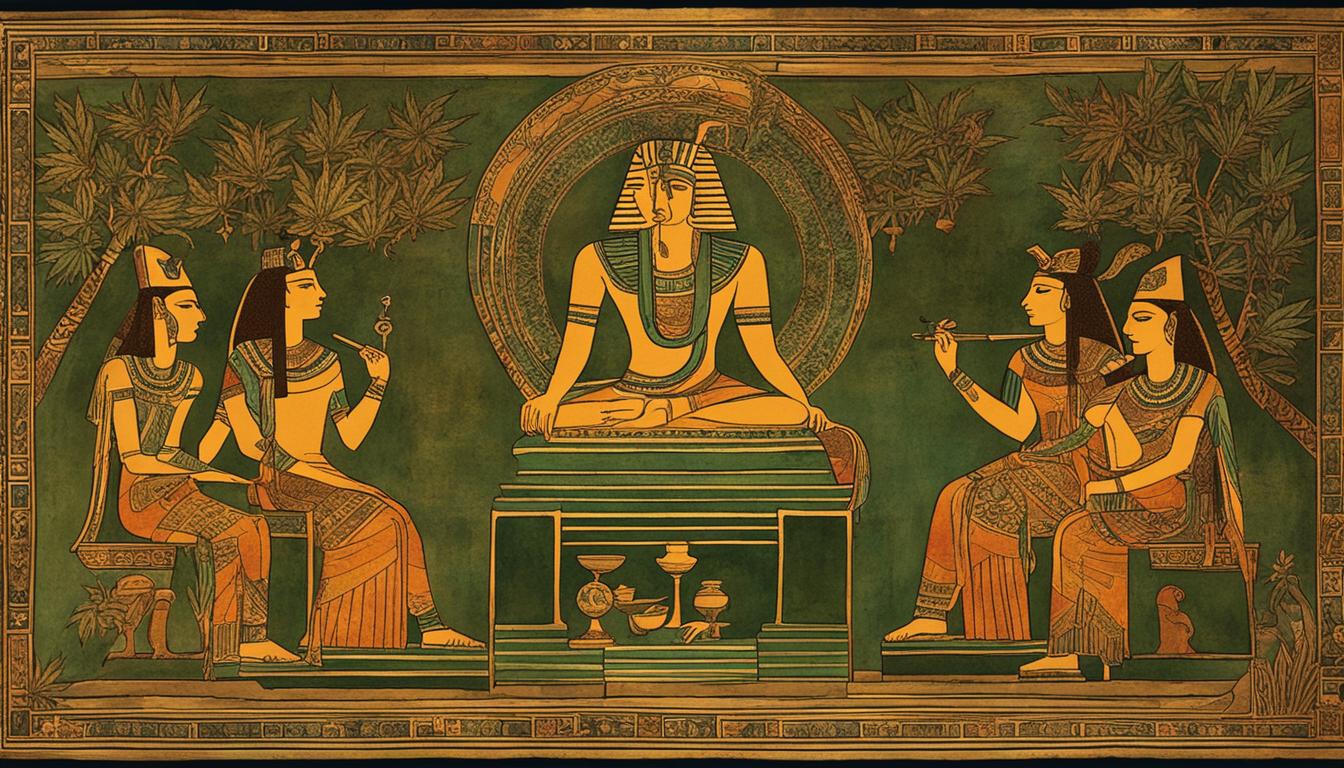How Did Religious and Cultural Views Affect Cannabis Use in Medieval Europe?
Welcome to our exploration of cannabis use in Medieval Europe, where we delve into the intriguing interplay between religious and cultural views and the consumption of this ancient plant. In a time long past, cannabis had a profound impact on the lives of individuals and communities, shaped by the diverse beliefs and practices of medieval societies. Join us as we uncover the historical perspectives that shed light on the role of cannabis in this era.
The use of cannabis in Medieval Europe was not monolithic but rather deeply influenced by the religious and cultural contexts of the time. Religions held varying views on cannabis, with some embracing it as a sacred herb while others forbade its consumption. Cultural practices also played a significant role in shaping attitudes towards cannabis, with pagan rituals and witchcraft often associated with its use.
By examining the impact of religion and culture on cannabis consumption, we gain valuable insights into the way medieval Europeans engaged with this plant. Join us as we uncover the historical threads that connect cannabis use to notions of spirituality, medicine, and societal order in the fascinating tapestry of medieval Europe.
Cannabis Use in Ancient Religions
Throughout ancient history, cannabis held a significant place in religious practices and spiritual rituals. Various civilizations revered cannabis for its entheogenic properties, using it as a means to induce spiritual experiences and connect with the divine.
One notable modern-day religion that still incorporates cannabis is Rastafari. Rastafarians view cannabis, or “ganja” as they call it, as a sacred herb that brings them closer to Jah (God). It is considered an integral part of their spiritual journey and is often used during rituals and gatherings.
Ancient Egypt, too, had a deep relationship with cannabis. Hemp oil derived from cannabis plants was utilized for medicinal purposes, and it was also believed to have magical properties. In fact, some archaeologists believe that cannabis may have been used in religious ceremonies and as an offering to the gods.
| Ancient Religions | Entheogenic Use | Rituals and Beliefs |
|---|---|---|
| Rastafari | Consider cannabis as a sacred herb | Used in rituals and spiritual gatherings |
| Ancient Egypt | Utilized hemp oil for medicinal purposes | Believed to have magical properties and used in religious ceremonies |
| Germanic Paganism | Associated cannabis with the Norse love goddess, Freya | Used in rituals and celebrations |
Cannabis also played a role in Germanic paganism. The Germanic tribes associated cannabis with the goddess of love, Freya. It was believed that consuming cannabis or using it in rituals would invoke Freya’s blessings and enhance love and fertility.
These historical perspectives on cannabis use in ancient religions provide valuable insights into its spiritual significance and cultural relevance throughout the ages. From entheogenic practices to sacred rituals, cannabis has held a prominent place in the spiritual journeys and beliefs of diverse civilizations.
Ancient Religions and Cannabis Use: Quotes
“The spiritual use of cannabis allows us to reach a higher state of consciousness and connect with the divine.” – Rastafarian Elder
“Cannabis was a gift from the gods, a sacred plant that brought healing and protection.” – Ancient Egyptian Priest
Cannabis Use and Islam
Islam’s relationship with cannabis in medieval times was complex and varied across different societies. While traditional theologians argued that cannabis use was prohibited, certain Islamic schools recognized its medicinal properties and allowed its use for therapeutic purposes.
One notable sect within Islam that embraced cannabis use was Sufism. Sufis believed that consuming hashish, a derivative of cannabis, could facilitate spiritual enlightenment and enhance their mystical experiences. They viewed the herb as a means of connecting directly with Allah and achieving a higher state of consciousness.
“The Sufi path is like a ship. It sails on the sea of hashish, and the spiritual seeker is like the merchant. The hashish is the means by which he travels to God, for without it he would be lost at sea.”
Early Arabic texts also provide insights into the historical use of cannabis in Islamic societies. For example, the physician Ibn al-Baytar documented the medicinal properties of marijuana in his renowned herbal encyclopedia, describing its effectiveness in treating various ailments.
| Aspect | Islamic Views |
|---|---|
| Medicinal Use | Allowed by certain schools |
| Sufism | Embraced cannabis for spiritual purposes |
| Early Arabic Texts | Documented cannabis as a medicinal herb |
| Prohibition | Pushed by certain Muslim elites |
However, as Islamic societies evolved, cannabis faced increasing scrutiny and prohibition. Many upper-class Muslims feared the potential impact of cannabis on the labor force and social order, leading to its eventual prohibition in some Islamic societies.

Throughout medieval Europe, the interaction between cannabis and Islam involved a complex interplay of religious beliefs, cultural views, and societal norms. While some Islamic schools recognized the medicinal benefits of cannabis, Sufism embraced its spiritual potential. Early Arabic texts documented the use of marijuana for medicinal purposes, while broader society saw a push for prohibition. Understanding this historical context sheds light on the diverse perspectives on cannabis within Islamic communities.
Cannabis Use in Medieval Europe: Witchcraft and Paganism
In the context of medieval Europe, cannabis use was closely associated with witchcraft and pagan rituals. While concrete evidence is limited due to bans and persecutions, historical accounts suggest that witches and seers incorporated various hallucinogenic substances, including cannabis, into their practices. This association between cannabis and witchcraft stemmed from the belief that these substances played a role in altering consciousness and connecting individuals to the spiritual realm.
Medieval Europe was a time of deep religious fervor, and the Church viewed any deviation from its teachings as heresy. As a result, the perception of cannabis as a threat to societal order led to its prohibition, and those who used cannabis, especially in the context of witchcraft, were severely persecuted.
“The link between cannabis and witchcraft in medieval Europe highlights the power of religious and cultural beliefs in shaping attitudes towards certain substances.”
Table: Cannabis Use in Medieval Europe
| Religious and Cultural Context | View on Cannabis Use |
|---|---|
| Witchcraft and Paganism | Association between cannabis and witchcraft rituals |
| Christianity | Prohibition of cannabis use as heresy |
| Medicinal Purposes | Limited documentation of cannabis use for medical reasons |
Despite the limited historical evidence, it is clear that cannabis played a significant role in witchcraft and pagan practices in medieval Europe. The societal fear and prohibition surrounding cannabis were driven by the prevailing religious beliefs and the perceived threat to the established order. Understanding the historical context of cannabis use in medieval Europe provides insights into the complex interplay between religion, culture, and substance use during that time.
Conclusion
Historical perspectives on cannabis use in Europe reveal the significant influence of religious and cultural views. In medieval times, cannabis practice was shaped by diverse beliefs and traditions. Different religions held varying stances on cannabis, with some considering it a sacred herb and others prohibiting its use.
Ancient religions and pagan practices in medieval Europe incorporated cannabis into their cultural and religious rituals. The entheogenic use of cannabis in ancient religions, such as in the Indian subcontinent, aimed to induce spiritual experiences. In Rastafari, a modern-day religion, cannabis is revered as a sacred herb.
However, the perception of cannabis as a threat to societal order resulted in its prohibition in various societies. Cannabis use was associated with witchcraft and pagan rituals, leading to its demonization and the persecution of those who used it. This negative perception shaped the regulation and control of cannabis in medieval Europe.
By understanding the historical context of cannabis use, we can gain insights into its current perception and regulation. The intersection of religion, culture, and cannabis in medieval times has a lasting impact on our understanding of this plant and its place in society.
FAQ
How did religious and cultural views affect cannabis use in Medieval Europe?
Different religions had varying stances on cannabis use. Some religions, like Rastafari, considered cannabis as a sacred herb, while others, like Buddhism and the Latter-day Saints, prohibited its usage except for medical purposes. Ancient religions and pagan practices in Medieval Europe incorporated cannabis into their rituals. The perception of cannabis as a threat to societal order led to its prohibition and the persecution of those who used it.
How was cannabis used in ancient religions?
Ancient religions, particularly in the Indian subcontinent, used cannabis as an entheogen, a substance used to induce spiritual experiences. Rastafari, a modern-day religion, considers cannabis as a sacred herb. Ancient Egypt utilized hemp oil for medicinal purposes, and Germanic paganism associated cannabis with the Norse love goddess, Freya.
What was the relationship between cannabis and Islam in Medieval Europe?
Hashish use spread widely in Muslim societies, but traditional theologians believed it was prohibited. Sufis, a mystical sect of Islam, believed that hashish could lead to spiritual enlightenment and direct communication with Allah. However, many upper-class Muslims pushed for prohibition due to its potential impact on the labor force. Some societies tolerated cannabis use, while others embraced prohibition.
What role did cannabis play in witchcraft and pagan rituals in Medieval Europe?
Although specific evidence is limited due to bans and persecutions, it is believed that witches and seers incorporated various hallucinogenic substances, including cannabis, into their practices. The use of cannabis in witchcraft and pagan rituals contributed to its association with societal disorder, leading to its prohibition and the persecution of those who used it.
What can we learn from the historical usage of cannabis in medieval Europe?
The historical usage of cannabis reveals the impact of religious and cultural views on its consumption. Different religions had varying stances on cannabis use, with some embracing it as a sacred herb and others prohibiting it. Understanding the historical usage of cannabis can provide insights into its current perception and regulation.














